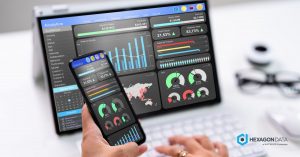|
Listen to the Article
|
What are data clean rooms?
A data clean room is a physical or virtual space in which data is cleansed and quality controlled. The data clean room concept is based on the clean room approach used in semiconductor manufacturing, where contaminants are kept to a minimum to prevent defects in the finished product.
Data clean rooms are used to ensure the accuracy and quality of data before it is used for decision-making, analysis, or other purposes. They are typically used when data from multiple sources must be integrated, when data is being migrated to a new system, or when data is being shared between organizations.
Clean rooms can be used to identify and correct errors in data, to standardize data formats, or to otherwise improve the quality of data. They can also be used to protect sensitive data from unauthorized access or theft.
The use of data clean rooms can help organizations to improve the quality of their data and to ensure that it is used appropriately.
How do they work?
Most businesses today rely on data to make decisions and drive growth. But data can be unreliable, and even contaminated. That’s where data clean rooms come in and here’s a step-by-step guide to how data clean rooms work:
1. Data is collected from various sources. This can include customer surveys, transaction data, social media data, and more.
2. The data is then cleansed. This involves removing errors, duplicate data, and outliers.
3. The processed data is then analyzed to glean insights. This step can involve various statistical methods and machine learning algorithms.
4. The insights are then used to make decisions and drive growth.
Clean rooms are an essential part of making sure data is reliable and trustworthy. By following the steps above, businesses can ensure they’re making decisions based on the best possible information.
What can they do for me?
Data clean rooms are one of the most important tools in data management. They provide a secure and controlled environment for data handling and processing, ensuring that data is kept clean and accurate.
There are many different use cases for data clean rooms, but some of the most common include:
-ETL Processing: Data clean rooms are often used for ETL (extract, Transformation, load) processes. This is where data from multiple sources is extracted, transformed into a consistent format, and then loaded into a target database. This type of process is often used when migrating data from one system to another, or when integrating data from multiple systems.
-Data Quality Assurance: Data clean rooms can also be used for data quality assurance purposes. This involves verifying the accuracy and completeness of data before it is loaded into a production database. This can help to prevent errors and inconsistencies in the live data.
-Data Analytics: Data clean rooms can also be used for data analytics purposes. This involves using statistical and analytical techniques to help understand and interpret data. This can be used to identify trends and patterns, or to make predictions about future behavior.
-Data Security: Data clean rooms can also be used for data security purposes. This involves ensuring that only authorized personnel have access to data, and that data is protected from unauthorized access or modification. This can help to prevent data breaches and protect sensitive information.
Pros and cons
There are several benefits to using a data clean room. First, it can help to ensure the privacy of sensitive data. Second, it can help to prevent data breaches. Third, it can help to ensure the accuracy of data by minimizing the possibility of human error.
However, there are also some drawbacks to using a data clean room. First, it can be costly to set up and maintain. Second, it can be time-consuming to process data in a clean room environment. Third, there is a risk that data may be lost or corrupted if it is not handled correctly.
Overall, the pros and cons of data clean rooms need to be carefully considered before deciding whether or not to use one. If privacy and security are paramount concerns, then a data clean room may be the best option. However, if cost and time are also major considerations, then other options may be more suitable.
Bottom Line
Data clean rooms are an essential part of any marketing organization. By definition, a data clean room is a controlled environment in which data is processed and analyzed. This environment is designed to protect the data from contamination by outside forces.
There are many benefits to using a data clean room. First, it ensures that the data is of the highest quality. But despite the many benefits of data clean rooms, there are also some challenges that need to be considered. First, clean rooms can be expensive to set up and maintain.
Despite the challenges, data clean rooms offer a number of benefits that make them an essential part of any marketing organization. By taking the time to understand how they work and how to use them effectively, marketing professionals can reap the rewards of using a data clean room in their day-to-day work.





